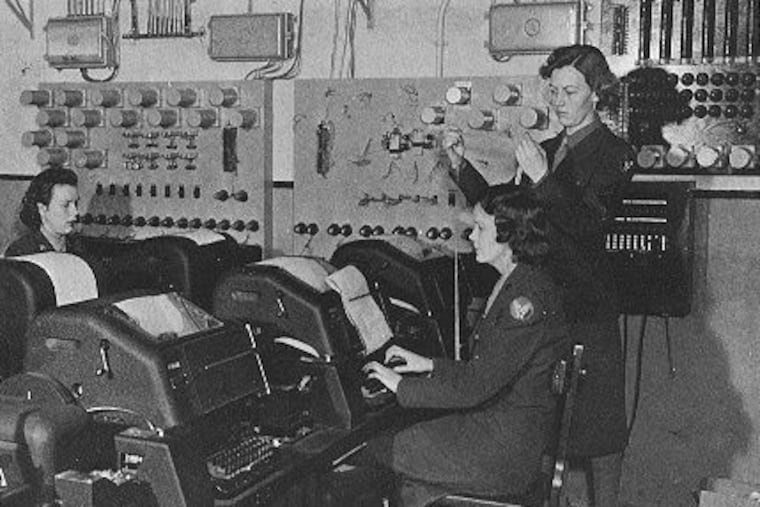KYW, bring back the clack | Opinion
KYW quietly ditched its faux background clickety-clack, one of the region’s signature soundtracks for the last half-century.

COVID-19; a nation in turmoil; Fay; Isaias; but the big story for longtime listeners of KYW, that venerable all-news radio station, is what isn’t happening anymore.
That sound. It’s gone.
KYW has quietly ditched its faux background clickety-clack, one of the region’s signature soundtracks for the last half-century.
And I will miss it. Turn on KYW these days, and it’s like an August night without crickets, like watching baseball without fans. What else can they take away from us?
Most listeners were probably unaware that the vestigial racket was supposed to evoke the sounds of phalanxes of teletype machines that would peck out the news from the major wire services, the Associated Press and United Press International.
Back in the day, just about every news outfit counted on the wires to cover the world at large, and to supply what we today call “content” to supplement what local news staffs could produce. Wires told the world that Germany surrendered, that Kennedy was shot, that Saigon fell, that Nixon resigned.
United Press International (UPI), my alma mater, mothballed its last teletype machine back in 1987, when Ronald Reagan was president and W. Wilson Goode was mayor of Philadelphia, as the wire services opted for new generations of quieter printers.
I’m not sure where KYW got their famous clacking noise; it sounded more like maraca hand-shakers than keystrokes. Anyone who has spent time inside a wire service bureau or newspaper “wire room” back in the day could tell you that comparing that clack to the real thing would be akin to comparing Beethoven’s Ninth to the music you hear right after that phone voice says, “Your call is very important to us.”
On a busy news day, those wire machines could orchestrate a one-note percussion symphony. And what variations: The anger of the shift keys; the lulls and crescendos that captured the flow of the news; and the bells, bells, bells, and bells that spoke to the urgency of what the machines had to say.
Bureaus and wire rooms had multiple teletypes dedicated separately to local and national news, and when news broke, the bells would sound on all of them. At UPI, three bells rang for an “urgent” story; five for a “bulletin;” and nine for a “flash,” which ideally would be two words or less.
The typing could not keep pace with the average mind, clacking along at a ponderous 60 words a minute. The bells would summon one to the wire machine to watch the letters appear one-by-one. What would be next? It was something like being a contestant on Wheel of Fortune. Even a two-word flash — and the last one in the teletype era likely would have been “Reagan elected” — would take two whole seconds to appear on the teletype roll.
Of course, these days that would be unacceptable; news happens so fast it doesn’t have time to happen. And KYW’s reasoning for junking antiquity was “the sound of the station should reflect the modern, nimble, multi-platform news organization we’ve become,” at least according to their news release.
I might not know from nimble, but, yes, I’ll miss the clickities. At the subconscious level, where things truly matter, they were reassuring. All or most was right with the universe, no matter what was or wasn’t happening.
Bring back the clack.
Anthony R. Wood is a staff writer at The Inquirer.